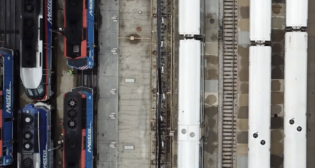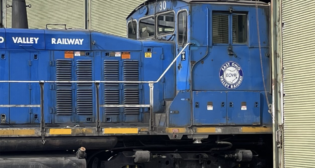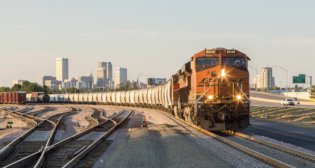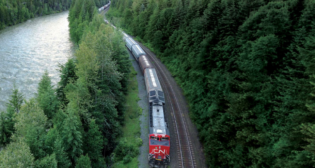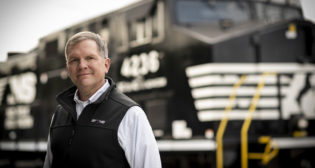
Ed Harris: “Just Run the Trains on Time”
Written by Rick Paterson, Managing Director, Loop Capital Markets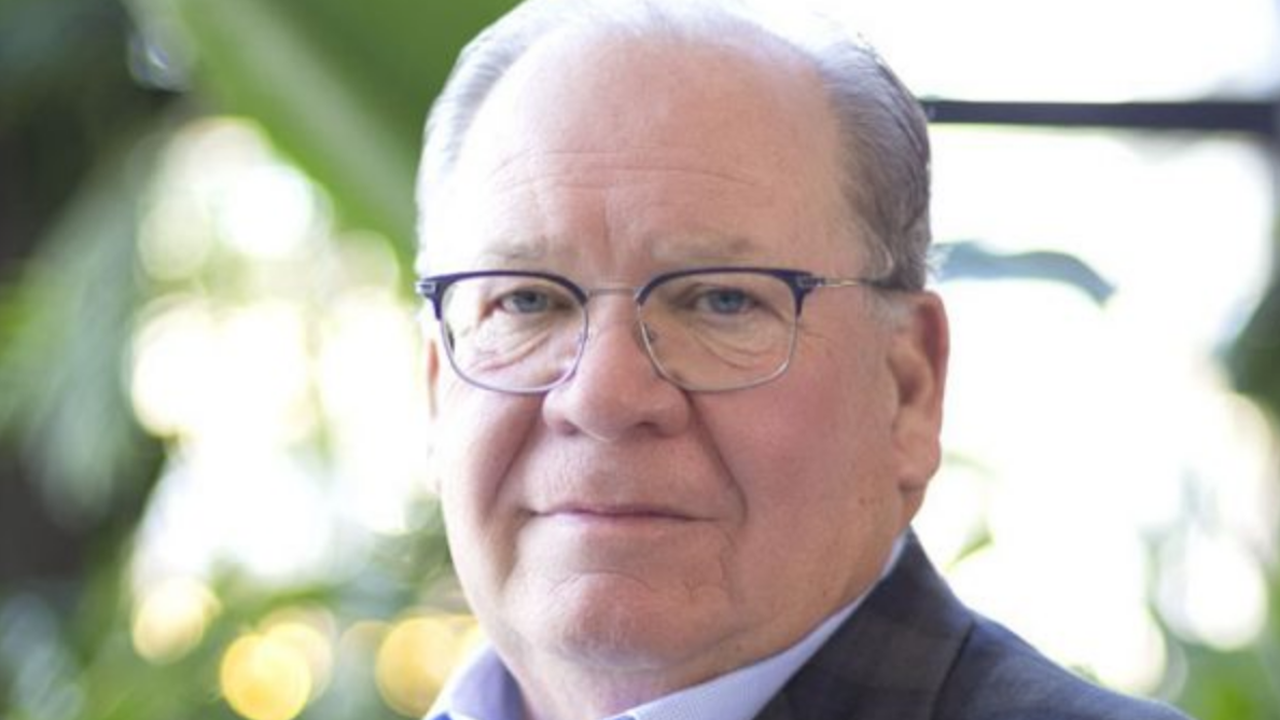
On Oct. 18, CN announced its operations succession plan as COO Ed Harris heads back into retirement, which occurred Nov. 15. Harris is arguably the best operator in the business and has had CN running beautifully since his return to the executive team last November (and consulting since March 2022).
In his prior role as CSX COO between January 2018 and October 2019, Harris improved network velocity by 11%, and earlier positions included 11 months as Canadian Pacific COO in 2010/2011, and his initial run at CN culminated in the COO position between March 2005 and January 2007. He began his career in 1968 with Illinois Central before its acquisition by CN in 1998, which in retrospect was the test bed for what is now known as PSR and a significant source of operating talent (including Hunter Harrison and Keith Creel). Given his historical perspective and track record, there was no way we were letting him walk out the door without extracting some final words of wisdom on some critical issues facing the industry.
Question 1: The New CN Operating Leadership Structure. You’re leaving CN with a non-conventional operating leadership structure in place, with Patrick Whitehead Chief Network Operating Officer and Derek Taylor Chief Field Operating Officer, rather than the traditional COO at the top of the pyramid. Please talk about the pros and cons of this new structure and if you think it could be a good model for the industry. Clearly it depends on Patrick and Derek continuing to work well together, but they sit 1,600 miles apart (in Edmonton and Chicago, respectively), which doesn’t appear conducive in terms of tight collaboration over time.

Ed Harris: Certainly it’s not conventional, but quite frankly, I think it’s very effective to be able to manage the groups with more of a hands-on approach. I don’t care if you’re 1,600 miles apart from each other, or you got one on the moon and one on Earth. Today’s communications are instantaneous, whether it’s through emails or text or phone calls. Our system is so integrated that we have visibility and can reach out regardless of the department or where it’s located, or what train is running late or what needs to be done.
We run a lot of daily reports that both these guys take advantage of. I spent the better part of my day going through reports and it gets a bit cumbersome for one guy to look after nearly 20,000 miles of railroad and a whole lot of loadings every day. I mean, we’ve got more than 80,000 cars online running around 1.3 billion GTMs every day. That’s a big operation. That’s a big railroad. So, I see this being a very strong format, very hands-on structure.
I think of Pat’s side as the network operating side. Crew management is a big issue today, with the workforce. Power is another big issue: maintaining the fleet, maintaining our horsepower-hour balances and planning for the locomotive of the future. And, of course, the engineering work that has to be done: so much focus on capacity and capital dollar spend. I mean, that’ll be right under Pat’s nose. And Derek having the field operations plus intermodal terminals and being responsible for running trains and terminals efficiently and keeping everyone on schedule. He’ll be coordinating and collaborating with Pat to make sure that all stays intact as the plan evolves.
I think the industry can’t help but take notice of what we put together. I think the benefits will be seen quickly.
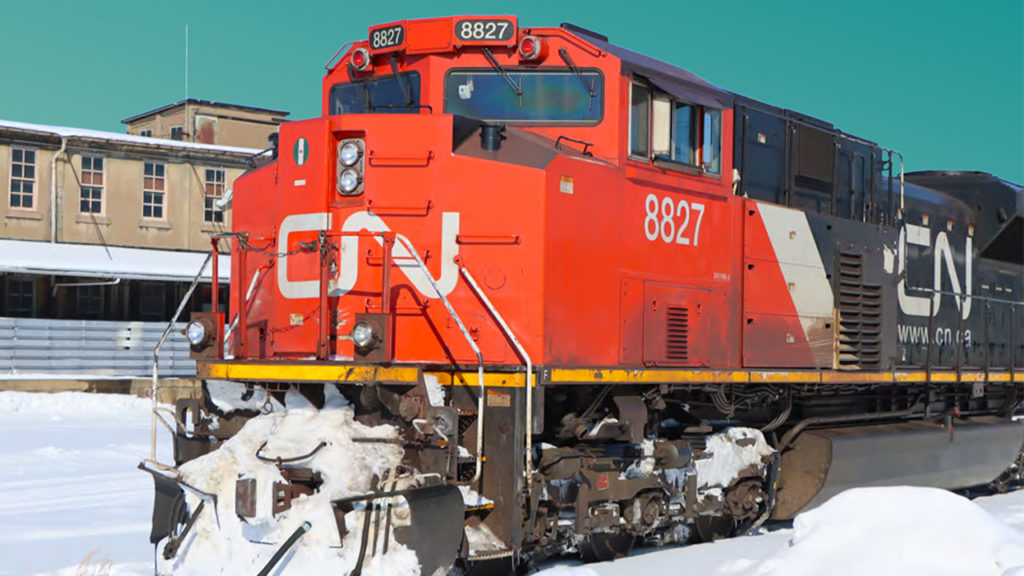
Question 2: Coaching Trees. In sports there’s a concept you’re no doubt familiar with called coaching trees, and in the railroad industry the most prominent parallel is with Hunter Harrison and his protégés over the years. Four of the six Class I networks are run by associates of Hunter at either the CEO or COO level (prior to your retirement), and it’s also the view on Wall Street—fairly or unfairly—that only people from this coaching tree can run these networks well. There’s also the reality that, at some point, we’re going to exhaust the supply of old Hunter sidekicks that can be unretired (no offense). Their success is not just because they “run PSR,” because at this point it’s not a mystery and, on paper, anyone can do it. But they can’t. What’s the magic ingredient that has made this group of people so successful but seems so difficult to copy or pass along to others? Does it go all the way back to Illinois Central?
Ed Harris: Sure, I get it … I’m a branch on that tree, and guys like Creel, Jim Vena and Mike Cory are also branches off that same tree. We were able to pick up a lot of operating experience and a lot of operating knowledge during Hunter’s time. But I don’t buy the fact that it stops with us. If we’re doing our jobs, then we’re pushing that knowledge down to our reports, who are doing the same thing with their teams, and so on, until that operational know-how permeates through the whole function.
I’ve been fortunate enough to work for four Class I’s: CN twice, Illinois Central, CP and CSX, and even a regional railroad company. I think of all that education I received working in operations at those Class I’s, including even the consulting trips overseas, allowed me to share some of the knowledge that I had gotten. I came back on board at CN to do that very job—drive that education, drive that learning, and drive that level of execution and excitement through the whole operating department. Passing on that learning is what I was paid to do when I came back. The younger officers I’ve worked closely with the past 18 months are getting the same level of education I got from Hunter 20 years ago. I think that’s an important aspect, to pay it forward with the next generation of operators.
One other thing I think people miss about being raised by Hunter is he wanted you to react to the situation, rather than wait to be told what to do. Don’t be afraid to make decisions. And look, if you make a mistake, OK. We’ll talk about it. We’ll fix a mistake. You don’t ever take a step backwards. It’s like a switch: Once you run through it, you don’t ever want to go back over it, period. So always a step forward. You realize really quickly who gets it, who doesn’t get it, and who’s ready to pick up the baton and run with it. That’s been the biggest part of my job: to work with the younger officers, and I think I’ve done that very successfully.
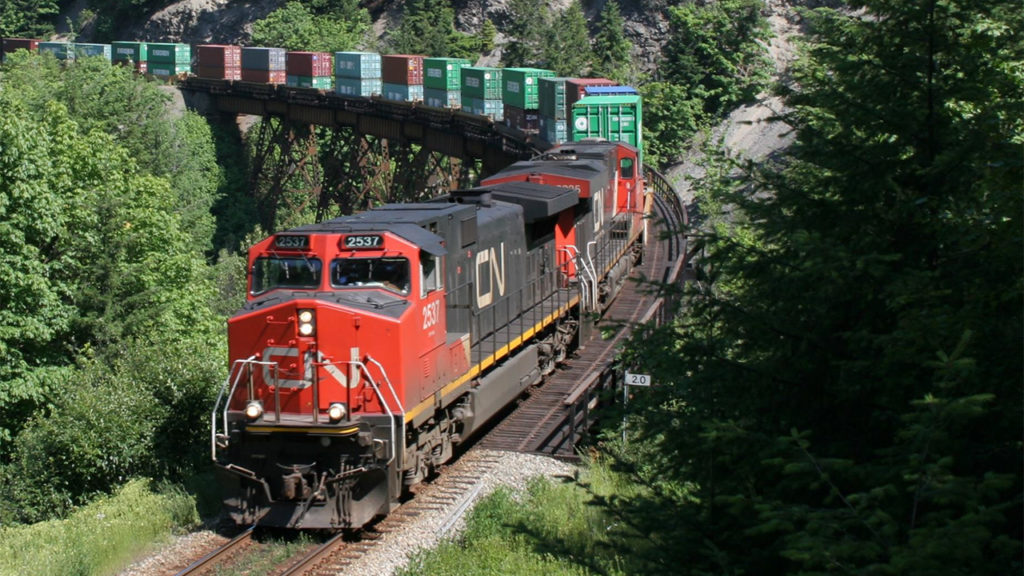
Question 3: How do we get closer to Truck-like Service? Service parity with trucks is obviously unrealistic, given the railroad industry’s inherent handicaps; primarily dedicated right-of-way prone to bottlenecks and domino effects; but the industry can certainly do better and close some of the gap in the non-bulk carload network. How?
Ed Harris: When it comes to rail, there’s not a customer in the world that expects overnight delivery service. But what they do expect is reliable, consistent delivery service and switching service. This is true for our carload business, but reliable, consistent truck-like transit is even more important to our Intermodal customers. And we’ve been pushing on our service to develop new competitive products with the goal of taking trucks off the highways.
For our manifest customers, we’ve added LSCP (Locomotive Service Commitment Plan) as a core metric along with velocity, dwell and on-time train performance. We’ve been above 90% the past two quarters, which is really just the result of the Team’s disciplined execution of the plan. And what this means for the customer is that we’ve given them the right car, on the right day, and within the expected switch window more than 90% of the time. It’s about doing what we say we’re going to do.
We’re also working with transload operators, even building our own transloads, where we can use trucks to keep up with that last 50 miles of service to a customer. That’s convenient for a railroad to get into with regularity. We’ve got some very remote locations, either in Northern Quebec, Northern British Columbia, Northern Alberta where it can be awful tough to get to, and using a transload center can really increase the consistency for the customers, who can have their products loaded or unloaded at these locations where we can hit rail traffic quickly and with regularity. I think transloads are a logical part of the solution.
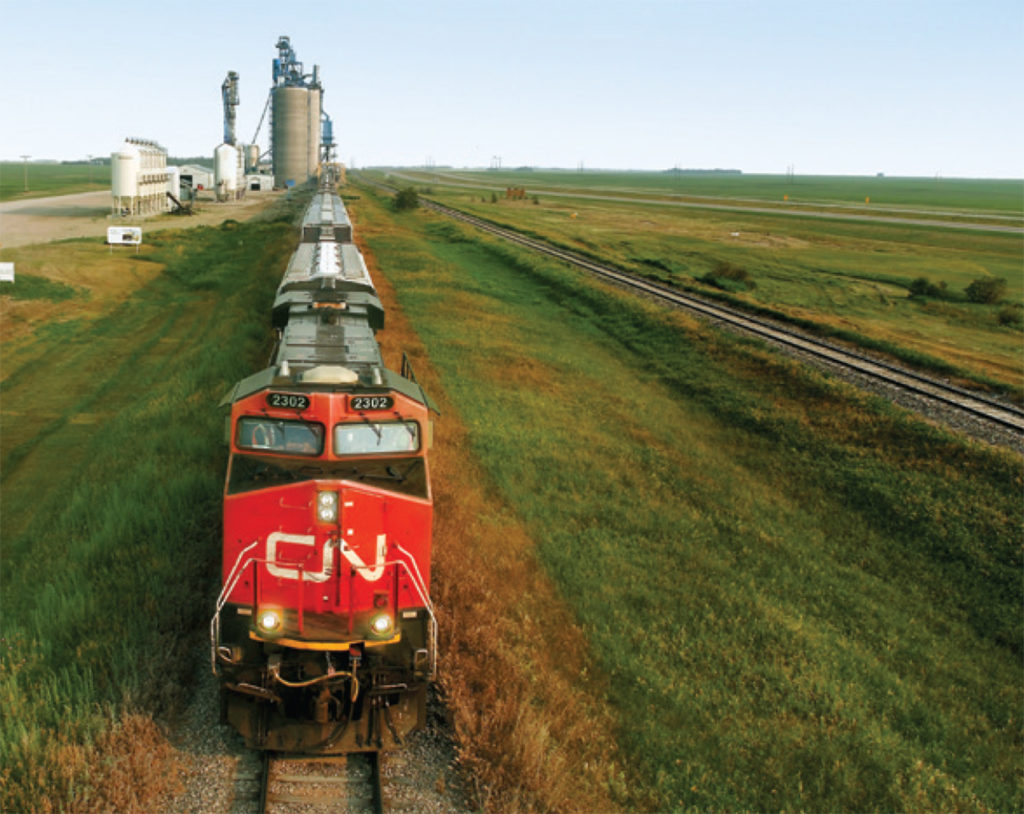
Question 4: How do we Fix the New-Hire Doom Loop? The industry seems to be in this perpetual new-hire churn where the railroads are far from employers of choice and, as a result, new hires aren’t always the highest quality. The skeptical scenario (more U.S. than Canada) is that conductor trainees hire on for the signing bonus, get pushed through training that’s too short and with an exit exam that’s almost impossible to fail, and then a big chunk of them quit within a few months because they can’t handle all the unscheduled work (sort of ironic for largely scheduled networks). We hear that in Canada, CN is a more desirable place for new hires to work than CPKC, so that’s something, but ultimately high service quality depends on high quality-people and in the lower ranks this needs improvement. How do we move the ball materially forward on this?
Ed Harris: It’s a big question. I think we need to do a better job when we hire people off the street and, by that, I mean we have to be honest with them and tell them exactly what their life is going to look like once they go to work. “Yeah, come to work for the railroad. You know, you’re outside, the sun’s always shining, the beautiful mountains in the background.” Well, that’s BS. We know it doesn’t work that way, and we have to be honest about it. We must be honest and straight up with these people. We need to be honest about the rate of pay, be honest about the signing bonus, and quite frankly, you don’t get a bonus until you qualify. In fact, you only get a portion of the bonus when you qualify, and you get the rest when you’ve been in the role for a year.
Now, that said, I think we also have to be smart about the people we hire. We’re not hiring college graduates to be conductors or switchmen. We should be in the high schools, their junior and senior years. One area the team is addressing that’s quite important in my mind is we have to be smart on how we schedule our trains, our service. These new hires want to work on a schedule as much as the guy with 30 years seniority. But you’re always going to need some relief employees, some extra board employees, and they should know what they’re getting into. In the U.S., where our employees have hourly schedules, in general everyone has two consecutive days off, including anyone on the extra board. Providing a predictable schedule based on the train plan is a big factor in helping with retention of new employees. This also allows for crews with greater seniority to bid on the same daily scheduled trains, giving them a set known schedule.
Also, we spend six months training these people at our campuses in Winnipeg and Chicago. It’s the best training you’ll ever see. Everything from engineer certification, the on-the-ground learning. We added our latest piece of training equipment in Winnipeg a couple of weeks ago. I told Matt McClaren (AVP Safety), “You know, we should have something to simulate slack action riding on a side of a car.” Because you can hear when the slack is running in or running out, you can hear it before it gets to you. So why not train new hires to be ready for it and learn how to brace for it? That’s what the old heads should be showing these younger guys, and now we have a way to do it in the classroom. So, a big step, as far as I’m concerned. And I can say, with some of these initiatives, that our retention rate has improved every year for the past three years.
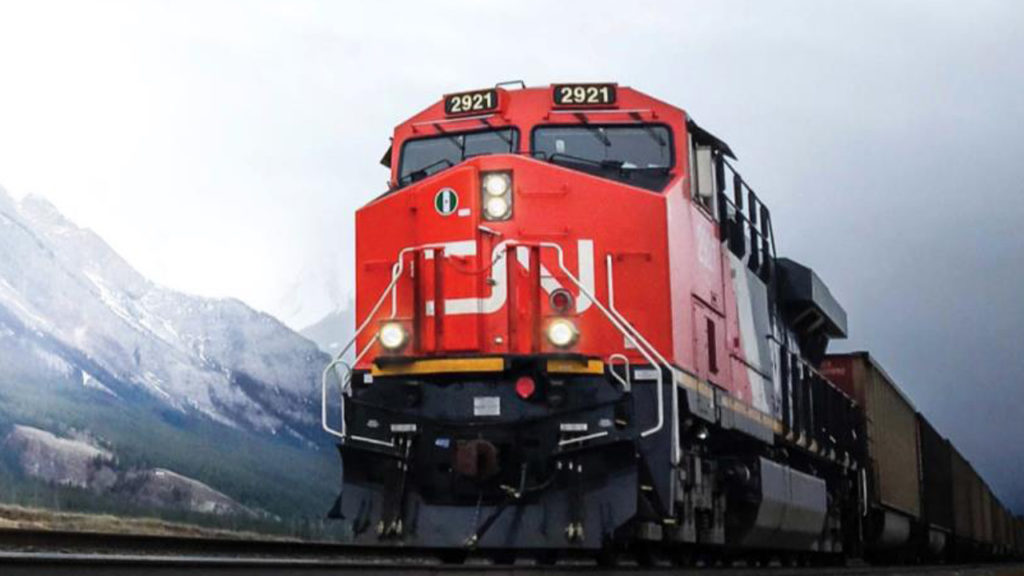
Question 5: The Opportunity for the U.S. Railroads from Service Consistency. Most of the U.S. railroads are desperately pursuing a goal you’ve already achieved—service consistency, with the hope it will lead not just to lower costs, but better market share dynamics vs. trucks and faster volume growth. As someone who has done it and seen it, how confident should the U.S. railroads be that the rewards will ultimately be there and they should stick with it, no matter how long it takes? In terms of timing, in your experience, how long does it typically take for customers to: a) notice good service; b) trust good service; and c) begin to move the market share dial from truck to rail?
Ed Harris: One of the biggest surprises I had after coming on board at CN last year was the change in the level of service and how fast we were able to adapt to it. Just run the trains on time. Just start the train. Something as simple as that gives your team a fighting chance to stay on schedule. Start the trains on time and once the cycle gets moving on time, then you can adjust the plan accordingly. Now, saying that is one thing, and doing it is another. That’s Derek’s side of the ledger, to run the trains on time. It’s Pat’s side of the ledger to say, “How many times do I need to touch this car? Can I run through Winnipeg? Can I switch it at Edmonton? Can I run through Gary, Ind., or can I run straight down to Memphis?” I mean, right now for example, we’re running a daily train of empty centerbeams out of Gary all the way to Prince George, British Columbia without touching anything. And as you know, every touch takes time and resources, so you want to minimize those.
You just saw the work that the team has put together on the traffic going to Gulfport: 24 hours from Chicago to Hattiesburg, where we hand off to CPKC. We leaned on that schedule to see what we could do, and that’s a good starting point. So, for the other roads, they have to stick with it. That’s the premise of railroading. Why have a railroad without a schedule? Why have a railroad without a plan? It just doesn’t make sense. It’s not logical. Don’t you want to be able to go to your customer and tell them what the scheduled service is? And don’t you want to be able to deliver to that? And wouldn’t you want your sales force to go in there and say, “Hey, we’re 85%, 90% on time. I think I need an increase here because we’re running the wheels off this equipment and this is the way you could save expense: fewer cars, quicker turns, switching five days a week. You know, it just makes sense for all of us to do well, not just the railroad, but customers too.”
You know, when I was on the south end of the Illinois Central in my earlier General Manager days, we had a customer with a pretty large car fleet and a small yard that didn’t have enough space to move cars around. I mean, it would take 12 hours to switch the plant. So, I told them, “Let me take 150 empty cars to McComb, Miss.,” and this is coming out of Geismar, La. “I’ll put them up just so I can switch—free storage. I’ll get you whatever you need, just give me 24 hours.” After about two months, the traffic manager says, “You know what? I’m going to get rid of those cars. I want to turn them back.” That’s a win-win.
Customers will notice good service immediately. For customers to trust good service, you must give them at least a month or more of seeing their traffic levels and their service continue to stay solid, but they’re going to be skeptical: What have you guys changed? How come it’s different? Why have you gotten better? What’s in it for me? And for a customer to begin to move the market share dial from truck to rail? Well, I guess that depends on the customer and depends on their traffic manager. I think that Marketing and Sales should be in with the customer knowing full well what our service commitment is and being able to explain that service commitment and why they’ve seen a positive change, positive improvements in their level of service.
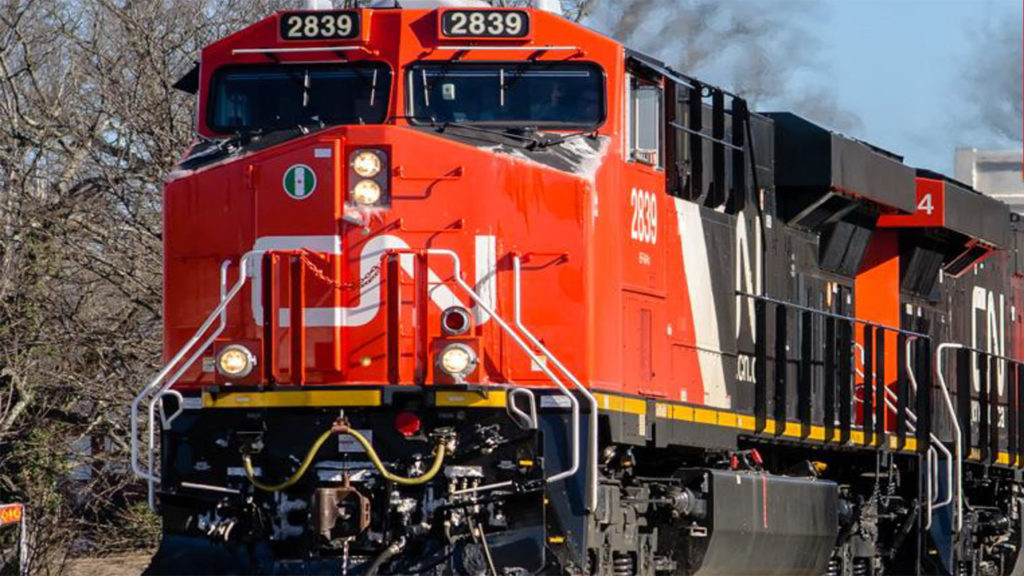
Question 6: Parting Message. What’s the key message you want to leave for the next generation of up-and-coming operators across the industry? What’s important, what should they start thinking about, and what are the challenges they’re going to need to overcome?
Ed Harris: I think they should really know the railroad. I mean every switch, every customer. And that goes with territorial responsibility. Whether you start as an Assistant Trainmaster, Trainmaster, Assistant Superintendent, you better know everything that happens on your property. You better know what every engine does, what every assignment is scheduled to do. You better be on a first name basis with every customer. You have to know everything from soup to nuts, from the A-End to the B-End of a car. You better know everything that goes on. Period.
I’m speaking from a real-life example here because I came out of Materials Management. I was 40 years old, and I became Assistant Superintendent in the Chicago Terminal overnight. Those were my running orders: every job, every train meet, every customer, to look out for opportunities. I think that was a real formative part of learning the operation, to learn what the railroad was really about.
You also have to know your labor agreements. Don’t be afraid to question labor agreements. Develop relationships with the local and general chairman, because sooner or later you’re going to have an issue. Somebody’s going to break a rule. There’s going to be an incident. Don’t try to manage it from a desk. Get out in the field, be with your crews, ride trains. I can’t begin to tell you how many times I rode trains up and down the Illinois Central, on the head-end, not in an office car. Meeting crews, meeting customers, knowing what the service levels were.
The generation behind me, Derek and Pat and their teams, are going to have to be much more in tune than I did with what’s going on beyond Operations. They need to know more about stakeholder engagement, employee diversity and environmental issues, to name a few. These are all good things and needed to run the railway for the future.
We thank Ed Harris for taking the time to put together these thoughtful answers and wish him a long and happy retirement. Also, thanks for the helpful coordination from Stacy Alderson and the CN Investor Relations team.
